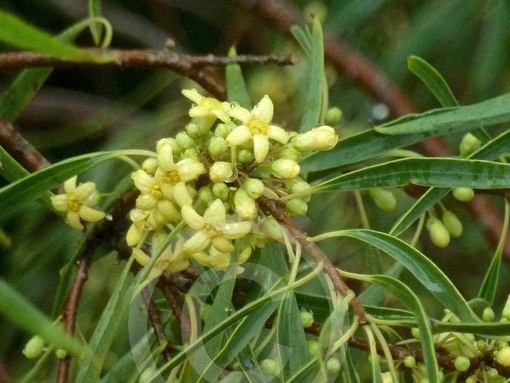Pittosporum phillyraeoides
(Pittosporum phillyraeoides)

Description
Pittosporum angustifolium (formerly Pittosporum phillyreoides) is a shrub or small tree growing throughout inland Australia. A slow growing plant, usually seen between two and six metres high, though exceptional specimens may exceed ten metres. Common names include weeping pittosporum, butterbush, cattle bush, native apricot, apricot tree, gumbi gumbi (or gumby gumby), cumby cumby, meemeei, poison berry bush, and berrigan. It is drought and frost resistant. It can survive in areas with rainfall as low as 150 mm per year. A resilient desert species, individuals may live for over a hundred years. A revision of the genus Pittosporum in 2000 re-instated this species. Pittosporum angustifolium was first described in 1832 in the Loddiges' The Botanical Cabinet, published by William Loddiges and George Loddiges. George Bentham combined this species and P. ligustrifolium with P. phillyreoides, however all three were split in the 2000 revision; the true P. phillyreoides is only found in a narrow coastal strip of northwestern Australia. The weeping foliage of P. angustifolium distinguishes it from the other two taxa. Extracts of the plant were traditionally used by the Aboriginal people in the treatment of eczema, pruritus, bruises, muscle ache, sprains, cramps and colds as well as to induce lactation. It also produces a chewable gum. The Aboriginal people also used the plant to treat various cancers however its effects not been verified by rigorous scientific investigation. A research paper by J.Vesoul and I.E.Cock of Griffith University, Queensland, published in 2011, concluded that the results of the study “partially validate the traditional Australian Aboriginal usage of P. phylliraeoides to treat bacterial and fungal diseases and indicate that P. phylliraeoides is worthy of further study.” The paper also noted that "further toxicity studies using human cell lines are needed to verify the suitability of these extracts."
Taxonomic tree:







